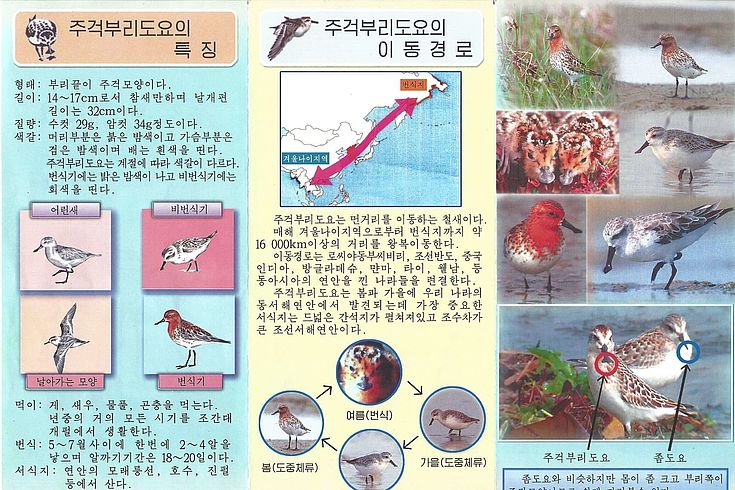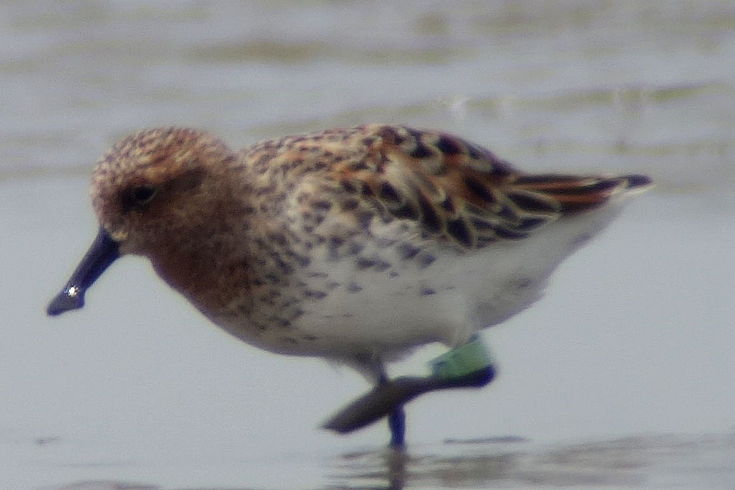Publication
Raising Awareness about the Endangered Spoon-Billed Sandpiper

The new brochure informs about the characteristics and habitats of the Spoon-billed Sandpiper.
The North Korean intertidal wetlands of the East and West Coast of the Korean Peninsula are the preferred habitat of the Spoon-billed Sandpiper, which is a migratory bird species that travels 16 000 km to southeast Asia every year. Whereas in 1977 experts had counted 4000 specimens, in 2014 the population shrunk to approximately 400 animals and is threatened with extinction. Reasons for the drastic reduction include pollution and looting of the North Korean wetlands, low breeding, and human hunting.

© Dr. Nial Moores / Birds Korea.
Regarding nature protection, the Hanns Seidel Foundation Korea, together with the local partner, the North Korean Ministry of Land and Environment Protection, is committed to public education for the preservation of threatened species, including the Spoon-billed Sandpiper. Furthermore, one of the main partners of HSF Korea in the field of biodiversity and wetland conservation, Birds Korea and its Director, Dr. Nial Moores, contributed by giving scientific advise and supplying photos of the species. WWF HK contributed illustrations of the Spoon-billed Sandpiper for the publication. Without this support the publication of the leaflets wouldn't have been possible and important measures such as the protection of the habitat and monitoring of the bird population could not be taken. The distribution of the brochures to schools, site managers and research institutes is intended to increase public awareness to promote active participation.
